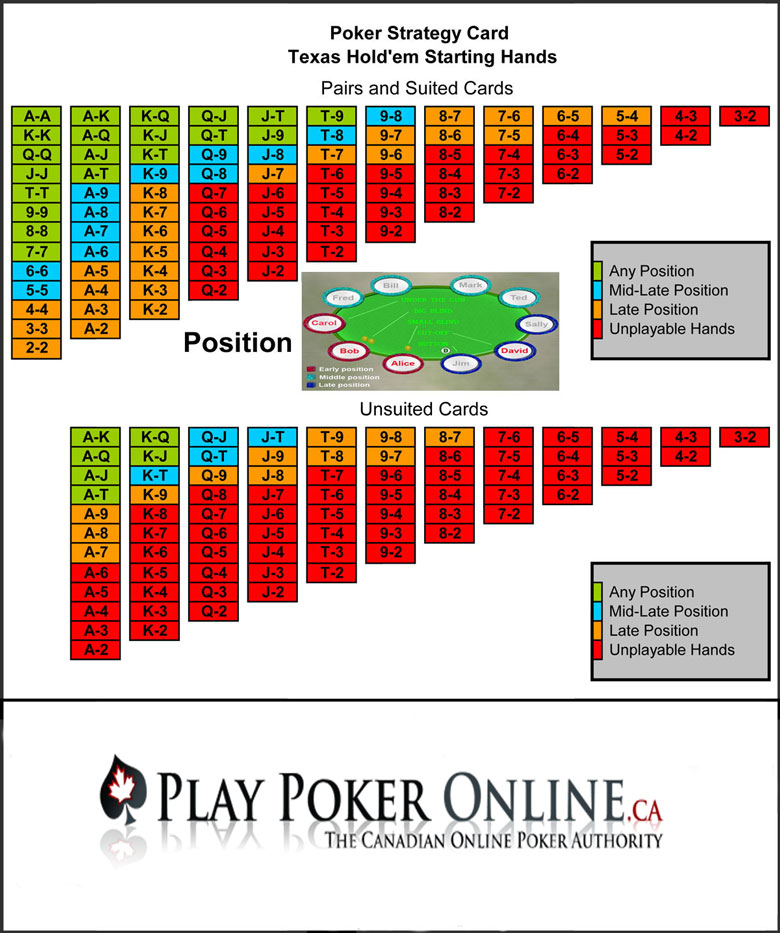A Guide to Developing a Solid Betting Strategy in No Limit Texas Holdem Poker
Understanding Position and its Importance
Position is one of the most crucial factors affecting a player’s betting strategy in no limit hold’em poker. Players in early position have less information about their opponent’s hands compared to those in late position. As a result, it is generally a better strategy for early position players to play conservatively with strong hands only. Late position players, on the other hand, have more information about their opponent’s previous actions. This provides them an advantageous position to start strong or bluff with a wider range of hands. Late position also gives players opportunities to capitalize on mistakes made by their opponents earlier in the hand. A solid understanding of how position impacts relative hand strengths is key to developing an optimized betting strategy.

Evaluating Pre-Flop Odds and Risk-Reward Ratios
When making pre-flop betting decisions, careful consideration must be given to pot odds, implied odds, and risk-reward ratios for each potential starting hand. Hands like ace-jack are often less profitable in the long run compared to tight starting ranges like pocket pairs, big cards, and suited connecting cards. While hands like ace-jack hit the flop fairly often, they are prone to heartbreaking losses when outdrawn or outkicked post-flop. By focusing on strong starting hands with clear equity, players improve their chances of extracting value through multiple streets of betting. Loose weak hands may seem profitable in the short-term but will result in negative expected value over time against skillful opponents.
Using Bet Sizing to Represent Strength and Induce Bluffs
The size of pre-flop and post-flop bets effectively communicates a player’s perceived hand strength. Small bets are more likely to induce calls from draws and weaker holdings while scaring off stronger opponents. Large bets with air tend to get called more often due to their polarizing nature, as opponents put the raiser on either the nuts or a bluff. Balanced mixed strategy helps keep opponents guessing. Players must consider how bet sizing impacts implied odds when planning multiple streets of value extraction from strong made hands or implied bluffs. Skilled sizers balance their betting patterns and successfully represent strength with a wide range of value holdings.
Adjusting Post-Flop Strategy Based on Board Texture
The texture or composition of community cards dealt affects post-flop betting strategies dramatically. Boards with overcards, flush draws, and open-ended straight draws invite more action. One pair holdings on such dynamic boards usually lack post-flop value without a strong kicker. Players are better off checking such marginal holdings to see cheap additional cards or avoid large bets entirely. Connected boards with opened ended straight or flush possibilities but no overcards are more preferable to bet for value with one pair. Boards where your holding completes to two pair or better are obvious streets for strong betting. Texture reads help skilled players assess hand equity, maximize value, and manage risk optimally through multiple betting rounds.
Factoring Opponent Reads and Implied Ranges into Decisions
Advanced level poker involves anticipating opponents’ likely ranges based on their positions, stacks, tendencies, and previous actions. Players should consider how their holdings might fare against different portions of opponents’ perceived distributions. Against known tight-aggressive opponents, marginal value bets or thin value bluffs are less profitable. Loose opponents invite more bluffing opportunities due to reduced discipline. By incorporating implied opponent ranges into their decision making processes, skilled players optimize their expected values based on the field and varying opponent abilities. Advanced reads make their bet-fold pie charts highly situationally sensitive based on inferred opponent strengths, stack sizes, and previous actions.
Balancing Betting Patterns For Sustainable Success
No strategy is strategically sound without balancing different streets of betting with a mix of value, bluffs, and equity denial bets. Over time, predictable players are exploited. It is crucial for profitable poker that value betting ranges are effectively balanced with bluffing frequencies. Skilled players check or bet the flop, turn, and river differently across varying board textures to avoid extreme polarizing tendencies. They mix in subtle randomness to their strategies through varied sizing and bluff-to-value ratios based on dynamic table conditions. Only balanced mixed strategies sustain long run success against evolving opponents. Poker is a game of imperfect information requiring balanced optimal adjustability to changing table dynamics for sustainable results.
Aptly Adjusting Strategies Based on Evolving Table Dynamics
While core strategies and general GTO principles anchor stable aspects of a player’s game, application must be flexible based on the current table’s trends and evolving player pool. As opponent tendencies become apparent, adjustment is necessary. A game-changing stack enters calls for wider play. Regular opponents leaving impacts future strategy balance. Blinds increasing require more mid-late street aggression. What worked against the initial field may be liable to exploitation against the current lineup if not adapted. Only those apt at real-time strategic analysis and adjustment based on complete situational re-evaluations maintain long-term profitability in the fluid high-variance poker environment. Flexible strategic thinking remains a most important edge.
